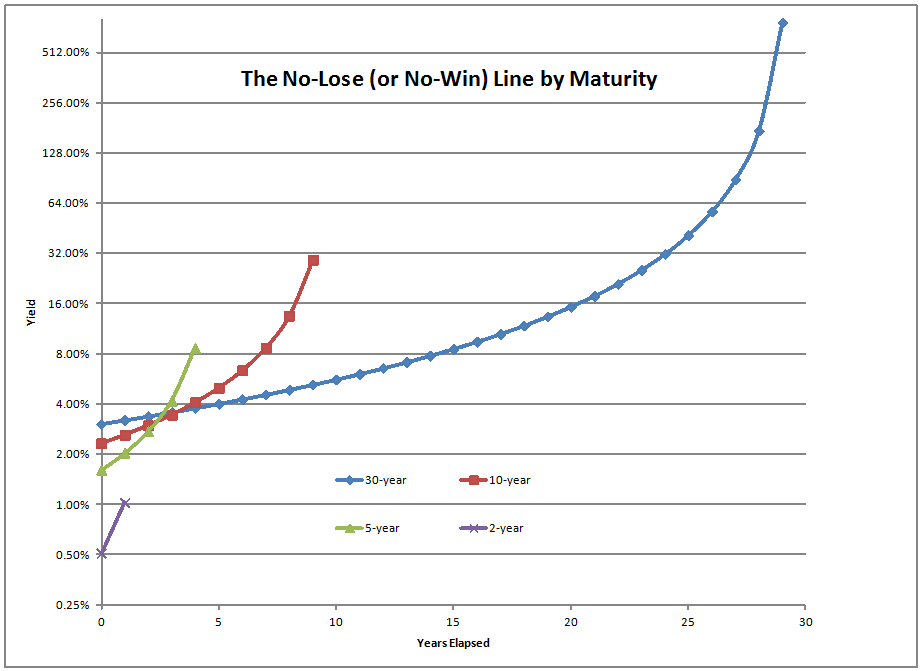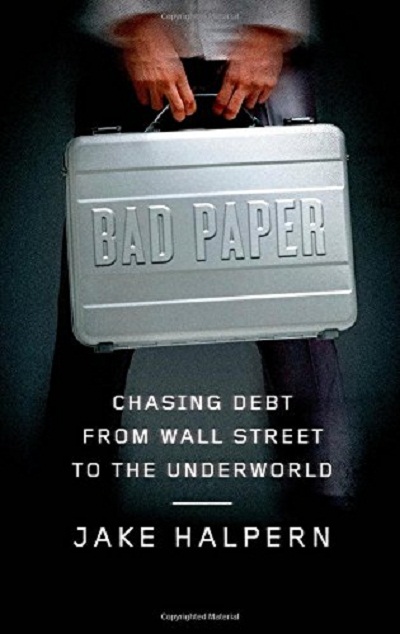Lagging Long Yields
 I’m a very intellectually curious person — I could spend most of my time researching investing questions if I had the resources to do that and that alone. ?This post at the blog will be a little more wonky than most. ?If you don’t like reading about bonds, Fed Policy, etc., you can skip down to the conclusion and read that.
I’m a very intellectually curious person — I could spend most of my time researching investing questions if I had the resources to do that and that alone. ?This post at the blog will be a little more wonky than most. ?If you don’t like reading about bonds, Fed Policy, etc., you can skip down to the conclusion and read that.
This post stems from an investigation of mine, and two recent articles that made me say, “Okay, time to publish the investigation.” ?The investigation in question was over whether yield curves move in parallel shifts or not, thus justifying traditional duration [bond price interest-rate?sensitivity] statistics or not. ?That answer is complicated, and will be explained below. ?Before I go there, here are the two articles that made me decide to publish:
- Yellen Gets That Sinking Feeling Greenspan Once Knew
- Long-Term Interest Rates Have Been This Low Only Twice In The Past 214 Years
The first article goes over the very basic idea that using ordinary tools like the Fed funds rate, you can’t affect the long end of the yield curve much. ?Here’s a quote from Alan Greenspan:
?We wanted to control the federal funds rate, but ran into trouble because long-term rates did not, as they always had previously, respond to the rise in short-term rates,? Greenspan said in an interview last week. He called this a ?conundrum? during congressional testimony in 2005.
This is partially true, and belies the type intelligence that a sorcerer’s apprentice has. ?The full truth is that long rates have a forecast of short rates baked into them, and reductions in short term interest rates usually cause long-term interest rates to fall, but far less than short rates. ?There are practical limits on the shape of?the yield curve:
1) Interest rates can’t be negative, at least not very negative, and if they are negative, only with the shortest highest quality debts.
2) It is very difficult to get Treasury yield curves to have a positive slope of more than 4% (30Yr – 1Yr) or 2.5% (10Yr – 2Yr).
3) It is very difficult to get Treasury yield curves to have a negative slope of more than -1.5% (30Yr – 1Yr) or -1% (10Yr – 2Yr) in absolute terms (i.e., it’s hard to get more negative than that).
On points 2 and 3, when the yield curve is at extremes, the real economy and fixed income speculators react, putting pressure on the curve to normalize.
Aside from that, on average how much do longer Treasury yields move when the One-year Treasury yield moves?
| Maturity | Sensitivity |
| 3-year T | 94.64% |
| 5-year T | 89.31% |
| 7-year T | 85.17% |
| 10-year T | 81.14% |
| 20-year T | 75.41% |
| 30-year T | 72.89% |
The answer is that the effect gets weaker the longer the bond is, bottoming out at 73% on 30-year Treasuries. But give Greenspan a little credit — in 2005 the 30-year Treasury yield was barely budging as short rates rose 4%. ?Then take some of the credit away — markets hate being manipulated, so as the Fed uses the Fed funds rate over a long period of time, it gets less powerful. ?In that sense, the Fed and the bond market integrated, as the market began looking past the tightening to the long-term future of US borrowing rates, what happened to short interest rates became less powerful on long yields. ?This is particularly true in an era where China was aggressively buying in US debt, and interest rate derivatives allowed some financial institutions to escape the interest rate boundaries to which they were previously subject.
Also note my graph above. ?I took the Treasury yield curves since 1953, and used an optimization model to estimate 10 representative curves for monthly changes in the yield curve, and the probability of each one occurring. ?If yield curves moving in a parallel direction means the monthly changes at different points in the curve never vary by more than 0.15%, it means that monthly changes in yield curves are parallel roughly 70% of the time.
When do the non-parallel shifts occur? ?When monetary policy moves aggressively, long rates lag, leading the yield curve to flatten or invert on tightening, and get very steep with loosening.
Later, the article hems and haws over whether rising long rates would be a good or a bad thing, ending with the idea that the Fed could sell its long Treasury bonds to raise long yields if needed. ?That brings me to the second article, which says that long interest rates are at record lows, as measured by average Treasury yields on bonds with 10 years or more to mature.
The graph in the second article shows that it takes a long time for inflation to come back after the economy has been in a strongly deflationary mode, where bad debts have to be eliminated one way or another. ?Given the way that monetary policy encouraged the buildup of the bad debts from 1984-2007, it should be little surprise that long rates are still low.
Conclusion
So what should the Fed do? ?If they weren’t willing to try a more radical solution, I would tell them to experiment with selling long Treasuries outright, and not telling the market that it was doing so. ?The reason for this is that it would allow the Fed to separate out the actual effect of more Treasury supply on yields, versus how much the market might panic when it learns?that the long Treasuries might be available for sale. ?The second effect would be like Ben Bernanke mentioning the word “taper” without thinking what the effect would be on the forward curve of interest rates. ?It would be an expensive experiment, but I think it would show that selling the bonds in small amounts would have little impact, while the fear of a flood would have a big but temporary impact.
If the Fed doesn’t want to raise long rates, it could try moving Fed funds up more quickly. ?Historically, long rates would lag more than with a slow rise. (Note: 2004-2007 experience does not validate that idea.)
What do I think the Fed will do? ?I think that eventually they will let all long Treasuries and MBS mature on their own, and?replace them with short Treasuries, should they decide not to shrink the balance sheet of the financial sector as a whole. ?That’s similar to what they did after the 1951 Accord, which restored the Fed’s independence after monetizing some of the debt incurred in WWII. ?Maybe this is the way they eliminate the debt monetization now, if they ever do it.
I think the present Fed will delay taking any significant actions until they feel forced to do so. ?They have no incentive to take any risk of derailing any?recovery, and will live with more inflation should it arrive.
PS –?that?long rates move more slowly than short rates may mean that duration calculations for longer bonds are overstated relative to shorter bonds. ?It might mean that 30-year notes would be 2-3 years shorter relative to one year notes than a parallel shift would indicate.








